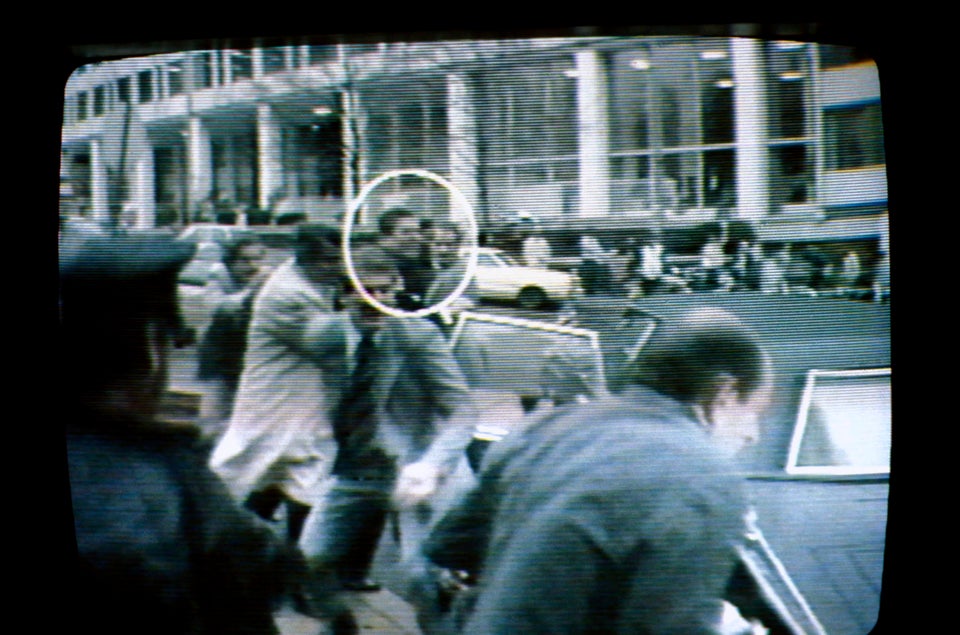On April 20, 1999, students Eric Harris and Dylan Klebold shot and killed 13 people before taking their own lives and injuring 24 other people at Columbine High School in Colorado. Images from the massacre flooded media outlets soon after, leaving images of blood-stained library corridors and grainy yearbook photos engrained in the nation's collective memory.
Artist Bunny Rogers was only 9 years old when the shooting occurred, yet while studying at Parsons School of Design in 2008, she fell deep into a rabbit hole of documentation, emotion and speculation surrounding the event. Who were these perpetrators who, at such a young age, resorted to such horrific violence? Are their dark insides extreme aberrations, or are they emblematic of a larger high school adolescent rage? Was the atrocity a freakish deviation from the norm or a standard consequence of a culture that submits to gun violence?
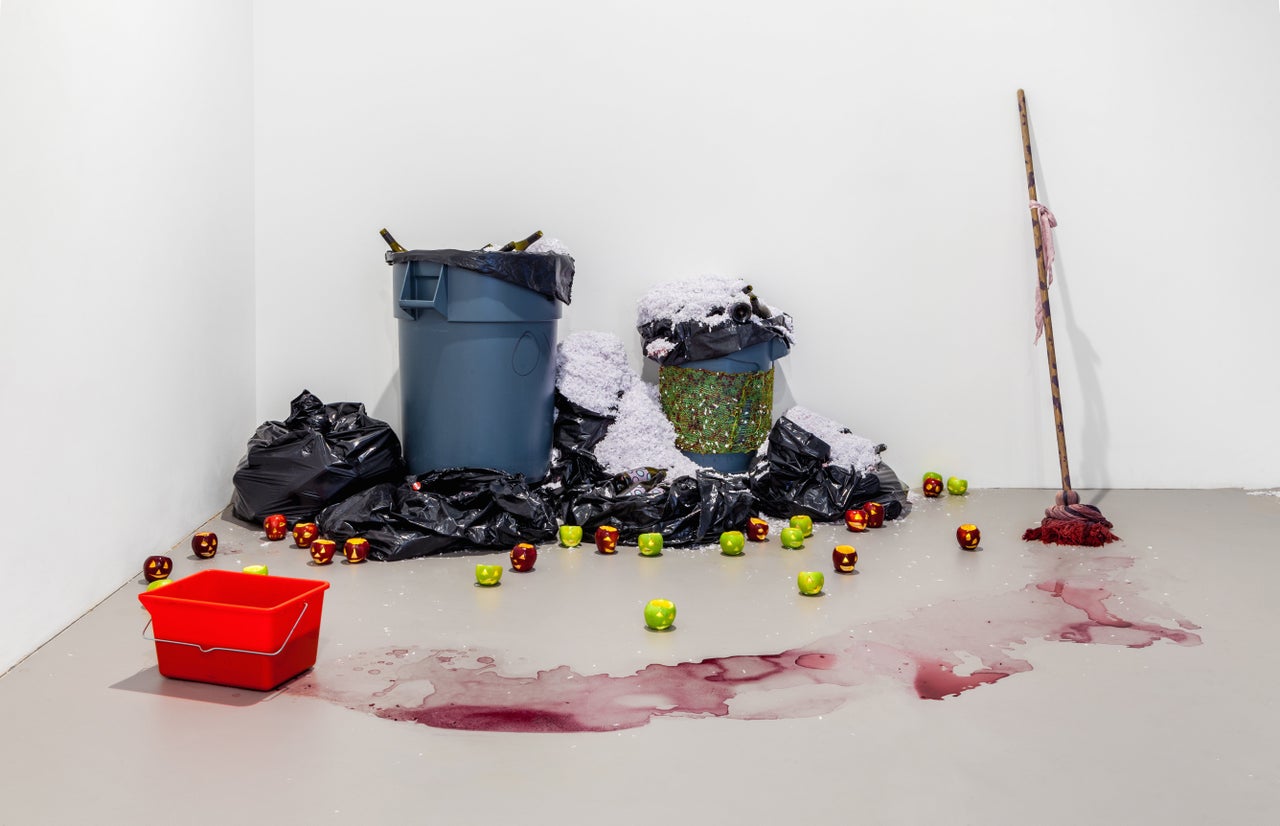
In her 2014 exhibition "Columbine Library," Rogers created a three-dimensional facsimile of the campus location where Dylan and Eric committed suicide. However, rather than rebuild the library exactly as it appeared in newspaper pages and police photos, Rogers transformed the grim scene into a cartoonish, nostalgic otherworld, where cult characters from Rogers' youth relived Columbine's grisly events.
The cartoon characters, Joan of Arc of "Clone High" and Gaz of "Invader Zim," served as female stand-ins for Dylan and Eric. "The reality of hatred is that it’s often self-hatred," Rogers explains in an artist statement. "I paired Joan and Gaz with Dylan and Eric, in part because I wanted to ask: What does female violence look like? How is it enacted? It’s usually just internalized forever."
This month, at Greenspon Gallery, Rogers returns to Columbine's halls, this time exploring the campus mess hall. In "Columbine Cafeteria," various items from the lunchroom are replicated in exact detail in the brightly lit space, juxtaposed with fantastical elements that fuse history and imagination as memory tends to do.
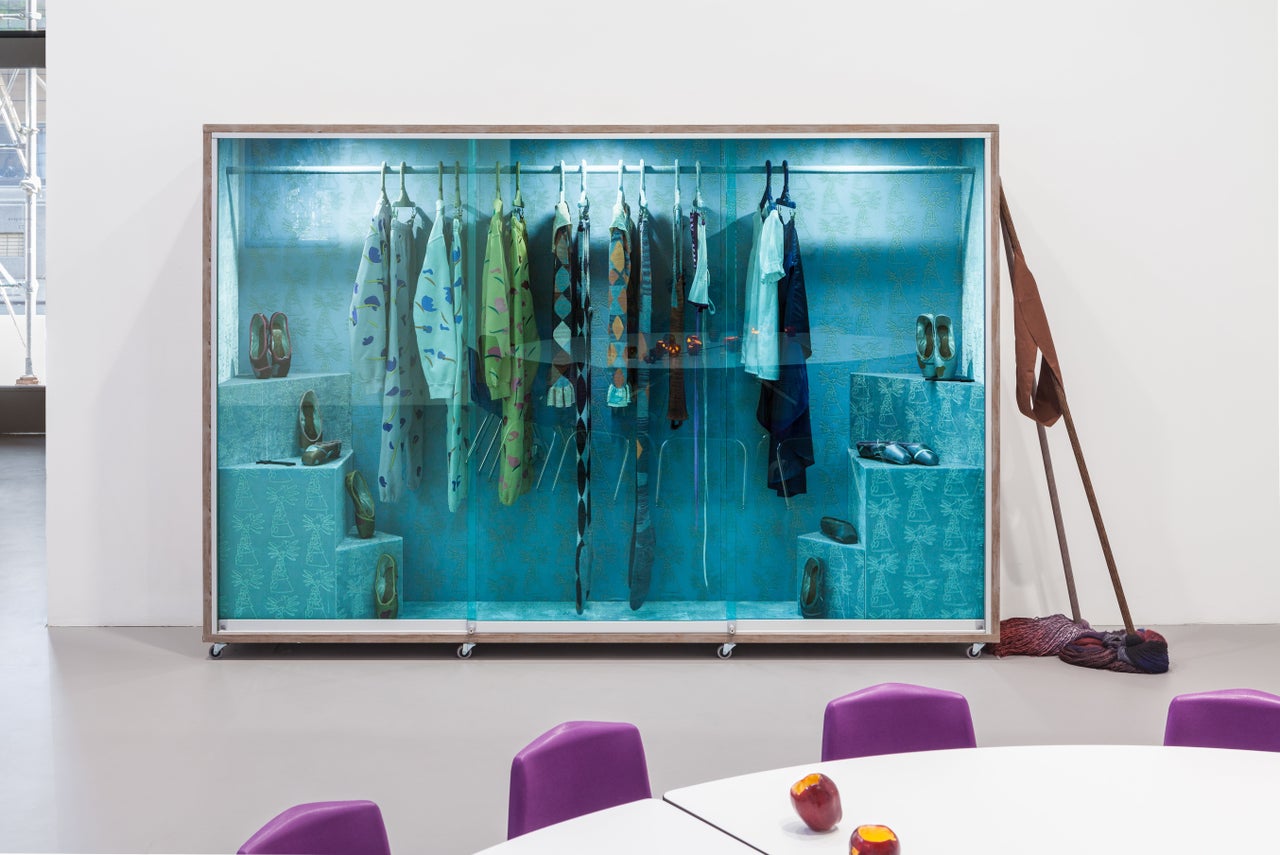
In the middle of Greenspon Gallery's space sits a set of purple, plastic chairs identical to the ones in Columbine's lunchroom. Playful from one angle, sinister and bizarre from another, the seating arrangement shows the power of banal objects to morph into loaded symbols before your eyes. "I’m interested in the way that furniture becomes these vessels for extreme events and extremes of emotion," Rogers told W Magazine. "They experience things too and wear down and become distressed. When I look at old pieces of furniture, I kind of see a silent scream."
In another room, fake snow falls in a dark space while a cartoon avatar named Mandy plays piano on screen. Mandy, also a character from the TV show "Clone High," becomes friends with Joan on the show, despite Joan's original hostility to her, due to what Rogers recognizes as "internalized misogyny." The two overcome their differences on Snowflake Day, when Mandy shows Joan the true meaning of friendship. In Rogers' animated video "Mandy's Piano Solo in Columbine Cafeteria," Mandy performs an Elliott Smith song in a bed of pixelated white snow, paying homage to the iconic musician whose gruesome death made him a legend for alienated youth.
Smith's spirit also loomed over Rogers' "Columbine Library" exhibition. A replica of a Columbine High bookcase was stocked with soft dolls resembling the singer-songwriter. Smith, who committed suicide in 2003, at 34 years old, represents an alternative manifestation of depression and anger, channeled through creative expression and self-inflicted harm. "The project is also a memorial to him," Rogers said.

In a corner of the gallery, a group of items dubbed "Mandy Memorial and Mandy Mop" appear propped up against a wall, surrounded by a streak of gruesome red wine. A handmade mop leans against the wall like a frightened witness, alongside black, overflowing trash cans and an array of red and green apples cut up to resemble jack-o'-lanterns. Often portrayed as a teacher's favorite gift, each misshapen apple seems to embody the feeling of debauched youth associated with the Columbine killings.
For Rogers, the mop also serves as a sort of self-portrait. "Part of the appeal of the mop is that it’s an overlooked object -- it cleans up dirt," she told W. "But in making mops I’ve had this growing desire to make them more and more beautiful. Because they’re not supposed to be. I think of them as tears or excess. They have a certain capacity and then they overflow. I think that’s a poetic idea -- that we have only so much ability to hold things in and then eventually it all comes out."
In "Columbine Cafeteria," it all comes out. The feelings of disbelief, terror and confusion. The strangeness of mourning people you've never met. The bizarre fetishization of the criminals and their pasts. The irrational patching together of clues that cohere to reveal nothing. The feeling of remembering an experience you've never had. The way history and imagination bleed into one another, becoming inseparable in our recollections.
"Columbine Cafeteria" is on view until June 26 at Greenspon Gallery in New York.
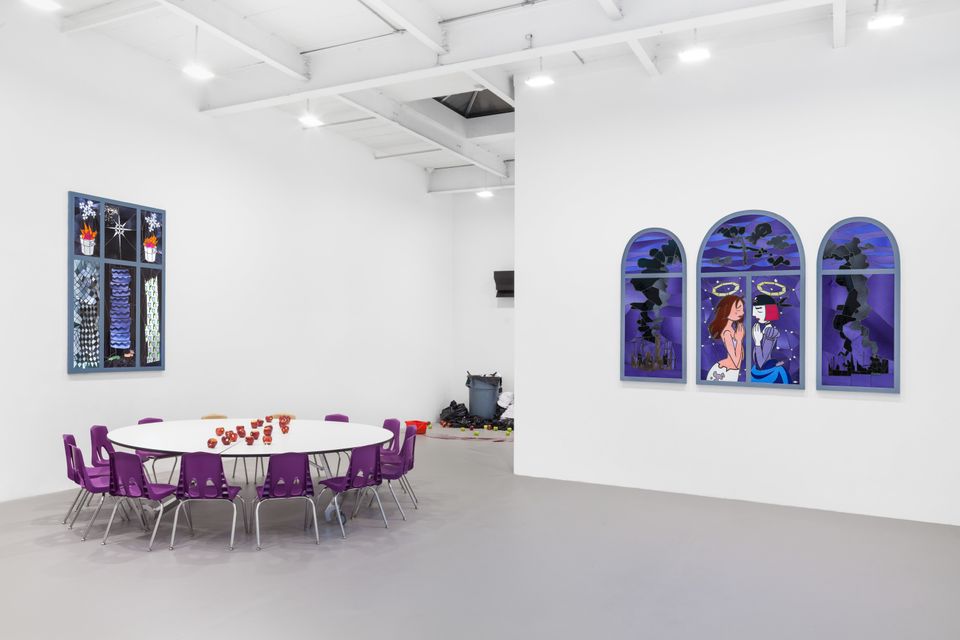

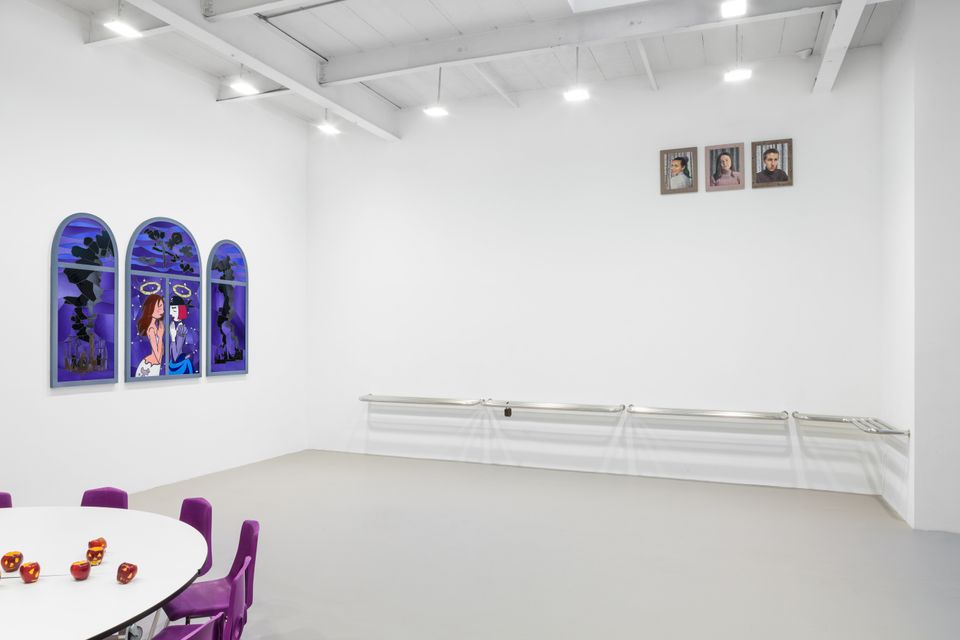


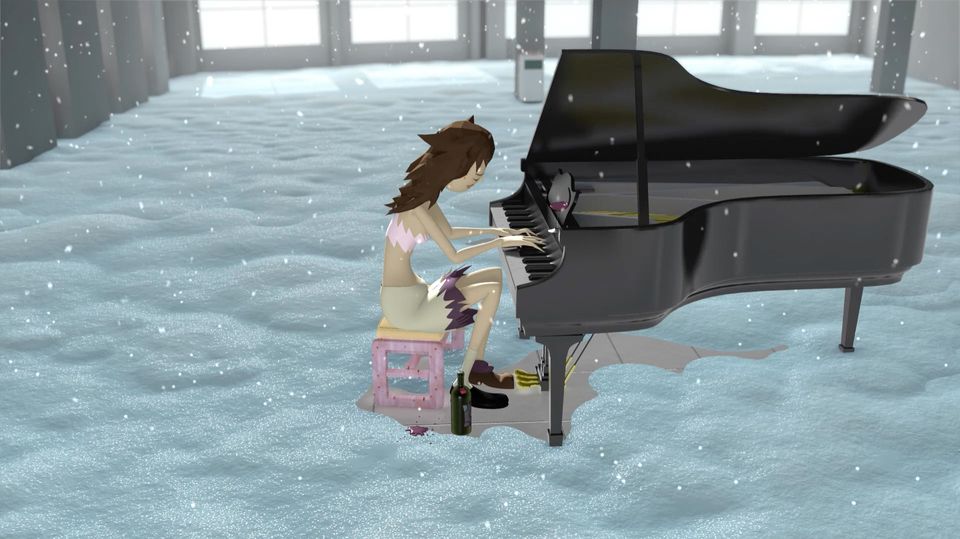
If you or someone you know needs help, please call 1-800-273-8255 for the National Suicide Prevention. Outside of the U.S., please visit the International Association for Suicide Prevention for a database of international resources.

